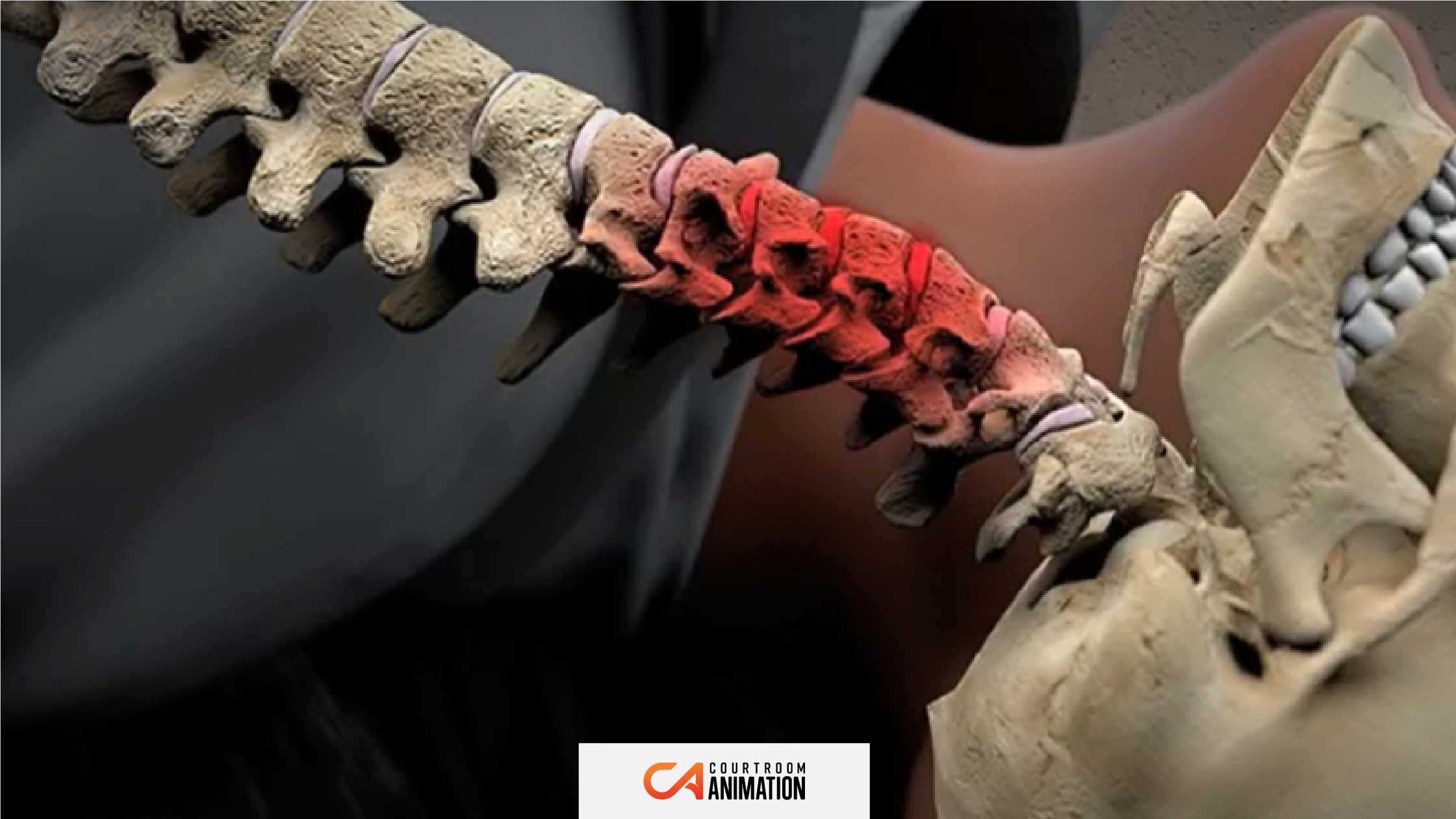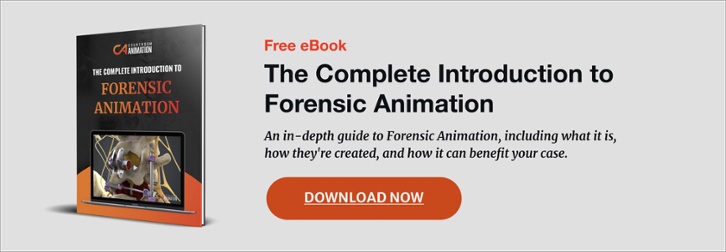
Throughout the litigation process, it is important for decision makers and stakeholders to easily grasp the data, fact patterns, and intricacies of your case. Those parties who must digest this information, such as judges, attorneys, paralegals, mediators and jurors, need effective means of consuming the relevant content ultimately aiding their comprehension.
With the help of an expert, forensic animation can provide a great opportunity to enhance the viewer’s current understanding by presenting meaningful and acceptable representations of data. Now, let’s take a look at some of the ways forensic animation can help win your case.
1. Visualize the most powerful facts of your case to persuade your audience
Computer-generated 3D animation is the ideal medium to accurately visualize factual data to reproduce a scene and demonstrate what happened at various points in time. Techniques such as illustrations, photographs, and in-person descriptions have fallen to the wayside due to the audience’s inability to collect so much information and make sense of it all.
By displaying hidden features, microscopic details, and instant reactions all in one legal animation, your audience can experience more than just words and pictures—they’ll be able to connect the dots.
2. Simplify your expert’s complex arguments and concepts into a forensic animation
To solve complex legal matters that pertain to a moment in time, perception, space, position, procedure, or course of action, you need creative visual presentations. All of these details and complexities need to be identified and shown clearly so that your audience can be properly guided.
When there are so many facts related to a case that can cause conflicting perceptions, forensic animation helps bolster your verbal arguments and provides an additional level of clarity and understanding to the facts of your case.
3. Create visual representations that your audience will retain for a longer period of time
While forensic animations are great for helping people understand the context, evidence, and arguments of your case, they also help to ensure that the information is retained for longer periods of time compared to oral presentations or in-person descriptions.
In fact, retention is 100% more effective when oral and visual presentations are combined and 650 times better than just oral presentations, according to the Weiss-McGrath report.
4. Validate or invalidate the opposing counsel’s arguments, witness perspectives, or expert analysis
When it comes to validating or invalidating the opposing counsel’s arguments, witness perspectives, or expert analysis, forensic animation can help verify what was or was not realistic or accurate under a particular circumstance.
To ensure the animation is fully credible in the minds of your audience, it’s important to go with a forensic animation company that is reputable and has an excellent track record. At Courtroom Animation, we’ve worked with over 500 law firms on more than 2,000 cases, and are proud to boost an admission rate of 99% in court. You need a team that creates an animation that is extremely accurate and based on facts.
5. Recreate an event to establish a very clear and visible timeline
Between the witnesses’ statements, police statements, and other reports, it can be difficult for your audience to comprehend a specific chain of events. For example, in trying to reconstruct a car collision, multiple pieces of data including measurements, photos of the accident scene, and resting positions of vehicles, only tells half the story. To better establish a visual narrative and timeline of events, forensic animation is an invaluable tool.
6. Influence decision-makers and gain insightful feedback early in the litigation process
Being armed with a compelling visual early in the litigation process can throw your opposition off kilter. Whether you are a plaintiff or defense attorney, the ability to leverage the five points above can chart a course for achieving a favorable result.
Here are some of the ways a forensic animation can help you influence decision-makers and gather feedback early in the litigation process.
Share Your Forensic Animation During Mediation
Considering the vast majority of civil cases settle before trial, it’s essential to spend just as much time preparing for mediation as you would for a trial. That means presenting a prominent and impactful trial animation that shows evidence to support your argument right from the get-go.
Show Your Animation to a Focus Group
Discover the most likely reactions to the facts and issues of your lawsuit and how best to present them for the benefit of your client. Representatives of potential jurors can provide feedback on your animation that will assist you in making appropriate decisions at trial and in discovery.
Share Your Animation With The Opposing Counsel
Invite the opposing counsel to comment on your animation and raise objections early so that you can address them. This feedback will ensure the proper foundation is met and allow the animator team to add, remove, or edit appropriately.
Show It To YOUR Expert
During your expert’s deposition, show the animations while the opposing counsel is present. This allows the opposing attorney to cross-examine your expert on the foundation. This will go a long way in front of the judge and mitigate potential arguments of prejudice or surprise.
Show It To The OPPOSING Expert
During the opposing expert’s deposition, attempt to get them to admit the animation is reasonably accurate, or have them articulate precisely why and how it may not be accurate. Our team can then edit the exhibits to address any concerns.
Have Witnesses Testify To Its Accuracy
During deposition, have witnesses testify that the animations are reasonably accurate. DO NOT SAVE THIS FOR TRIAL! When this is completed in deposition, you can attach the witness testimony to the motion in limine, allowing the judge to see that the animation already has a properly laid foundation.
Put Your Animation On The Exhibit List Early
Putting animations on the exhibit list well in advance of trial puts the opposing counsel on notice that you intend to show it to the jury. You may need to put animations on the demonstrative exhibits list depending on certain courts.
The Bottom Line
In the age of information and technology, forensic animation is a necessity. It’s the best way to present evidence and facts because people are visual learners. By helping people understand complex scenarios with powerful facts, you’ll more easily persuade them.
Get your quote today and one of our case specialists will contact you to discuss the specifics of your case.

Topics: